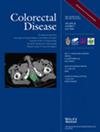Non-invasive vagus nerve stimulation to reduce ileus after colorectal surgery: randomized feasibility trial and efficacy assessment (IDEAL Stage 2B)
Abstract
Aim
Ileus is characterized by a period of intestinal dysmotility after surgery, leading to vomiting and constipation. In preclinical models, vagus nerve stimulation reduces intestinal inflammation and prevents smooth muscle dysfunction, accelerating the return of gut function. This study explored the feasibility of a definitive trial of non-invasive vagus nerve stimulation (nVNS) along with an early assessment of efficacy.
Method
A multicentre, randomized feasibility trial (IDEAL Stage 2B) of self-administered nVNS was performed. Patients undergoing colorectal surgery were randomized to nVNS or sham before and after surgery. Feasibility outcomes comprised assessments of recruitment, compliance, blinding and attrition. Clinical outcomes were measures of intestinal function and adverse events. All participants were followed up for 30 days. Interviews with patients and health professionals explored barriers to feasibility and perspectives around implementation.
Results
In all, 125 patients were approached about the study and 97 (77.6%) took part. Across all randomized groups, the median compliance to treatment was 19 out of 20 stimulations (interquartile range 17–20). The incidence of adverse events was similar across groups. In this unpowered feasibility study, the time taken for the return of gut function (such as first passage of stool) was similar between nVNS and sham treatments. According to interviews, patients were highly motivated to use the device because it provided them with an opportunity to engage actively in their care. Health professionals were highly driven to tackle the problem of ileus.
Conclusion
Powered assessments of clinical efficacy are required to confirm or refute the promise of nVNS, as already demonstrated in preclinical models. This feasibility study concludes that a definitive randomized assessment of the clinical benefits of nVNS is desired and feasible.


 求助内容:
求助内容: 应助结果提醒方式:
应助结果提醒方式:


